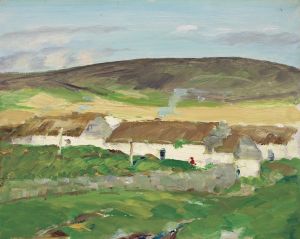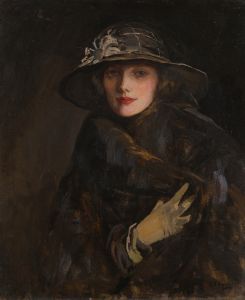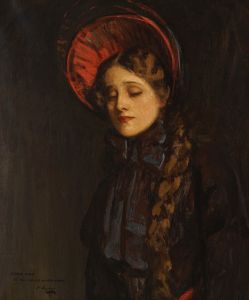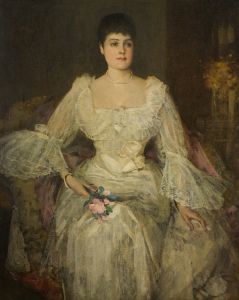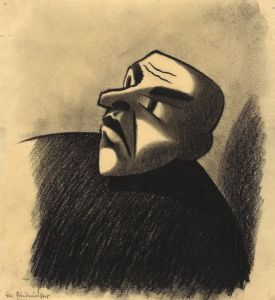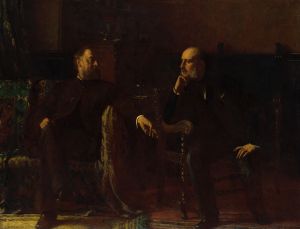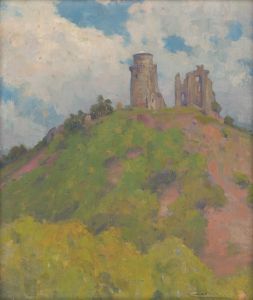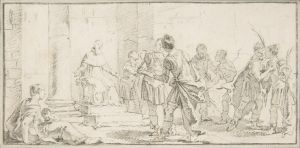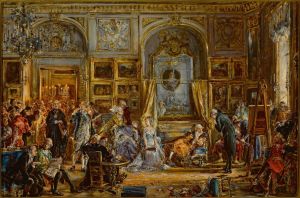
The Ratification of the Irish Treaty in the English House of Lords, 1921
A hand-painted replica of Sir John Lavery’s masterpiece The Ratification of the Irish Treaty in the English House of Lords, 1921, meticulously crafted by professional artists to capture the true essence of the original. Each piece is created with museum-quality canvas and rare mineral pigments, carefully painted by experienced artists with delicate brushstrokes and rich, layered colors to perfectly recreate the texture of the original artwork. Unlike machine-printed reproductions, this hand-painted version brings the painting to life, infused with the artist’s emotions and skill in every stroke. Whether for personal collection or home decoration, it instantly elevates the artistic atmosphere of any space.
Sir John Lavery's painting The Ratification of the Irish Treaty in the English House of Lords, 1921 is a significant historical artwork that captures a pivotal moment in the political history of Ireland and the United Kingdom. The painting depicts the House of Lords during the debate and eventual ratification of the Anglo-Irish Treaty, an agreement that marked a major step toward the establishment of the Irish Free State.
The Anglo-Irish Treaty was signed on December 6, 1921, by representatives of the British government and the Irish delegation, which included figures such as Michael Collins and Arthur Griffith. The treaty aimed to end the Irish War of Independence and provided for the creation of the Irish Free State as a self-governing dominion within the British Empire. It also allowed Northern Ireland the option to opt out of the Free State, which it subsequently did.
Lavery, an Irish-born artist, was known for his portraits and historical scenes. His painting of the treaty's ratification reflects his interest in documenting significant political events. The artwork portrays the grandeur of the House of Lords chamber, with its intricate Gothic Revival architecture and the assembled members of the British aristocracy and political elite. The composition emphasizes the solemnity and importance of the occasion, though it does not focus on individual figures or specific moments of the debate.
The ratification of the treaty in the House of Lords followed its approval in the House of Commons. The treaty was a contentious issue, both in Britain and Ireland, and its terms were debated extensively. In Ireland, the treaty led to a split in the nationalist movement, ultimately resulting in the Irish Civil War (1922–1923). In Britain, the treaty was seen as a pragmatic solution to a protracted conflict, though it also faced opposition from some quarters.
Lavery's painting serves as a visual record of this historic event, though it is not a literal depiction of the proceedings. Instead, it captures the atmosphere and significance of the moment. The artwork is part of Lavery's broader body of work, which often explored themes of politics, society, and identity.
Today, the painting is recognized as an important cultural artifact, reflecting both the artistic style of the period and the historical context of the early 20th century. It provides viewers with a window into a transformative moment in the relationship between Ireland and Britain.





